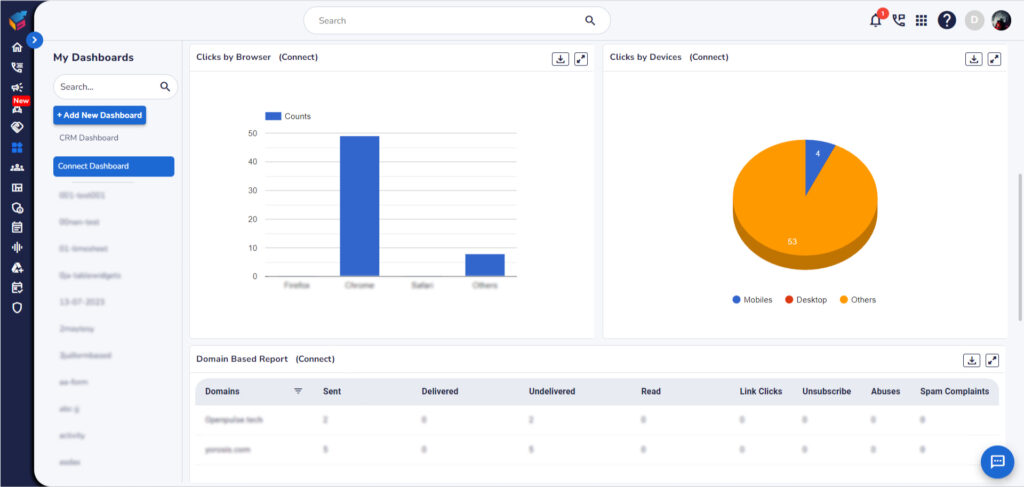Table of Contents
Imagine starting your day as a service manager by spending just 10 minutes reviewing your key performance indicators (KPIs) and instantly identifying the types of cases with the highest handle times. Or picture being a service agent with the ability to predict when a customer is likely to churn and knowing exactly how to prevent it. These scenarios illustrate the practical applications of customer service analytics today.
Every day, your contact center handles customer inquiries, generating vast amounts of valuable data. This data can be leveraged to drive business growth. According to the State of Service, 94% of service leaders consider real-time data essential for meeting customer expectations. Recent events have underscored this need, with 60% of service professionals noting an increase in customer expectations during the pandemic.
These statistics point to a clear conclusion: Service teams that embrace customer service analytics as a tool for enhancing customer satisfaction can build brand loyalty and achieve much more. Here’s what you need to know to take advantage of this opportunity.
In today’s digital age, businesses are inundated with data from various sources, and one of the most critical areas where data plays a vital role is customer service. Customer service data is a treasure trove of insights that can help businesses understand their customers better, improve service quality, and drive growth. However, making sense of this data can be daunting without the right tools and strategies in place. That’s where analytics comes in.
In this guide, we’ll explore the importance of customer service analytics and provide practical tips for leveraging data effectively to enhance your customer service operations.
Why Customer Service Analytics Matter
Customer service analytics involves collecting, analyzing, and interpreting data related to customer feedback, interactions, and support processes. By harnessing the power of analytics, businesses can gain valuable insights into customer behavior, preferences, and pain points. Here’s why it matters:
- Enhanced Customer Understanding: Analytics enables businesses to gain a deeper understanding of their customers by uncovering trends, patterns, and preferences based on historical data.
- Improved Service Quality: By analyzing customer feedback and support interactions, businesses can identify areas for improvement and optimize their service delivery processes to better meet customer needs.
- Predictive Insights: Analytics can help predict future customer behavior and anticipate potential issues, allowing businesses to proactively address concerns and deliver personalized experiences.
- Data-Driven Decision Making: Instead of relying on intuition or guesswork, analytics empowers businesses to make informed decisions backed by data, leading to more effective strategies and resource allocation.
Key Metrics and KPIs
To effectively measure and analyze customer service performance, it’s essential to track key metrics and Key Performance Indicators (KPIs). Some of the most common metrics include:
- First Response Time: The time taken to respond to customer inquiries or issues.
- Resolution Time: The time it takes to resolve customer problems or complaints.
- Customer Satisfaction (CSAT) Score: A measure of how satisfied customers are with the service they received.
- Net Promoter Score (NPS): Indicates the likelihood of customers to recommend the business to others.
- Customer Effort Score (CES): Measures the ease of the customer’s experience in resolving their issue.
- Ticket Volume: The number of customer inquiries or support tickets received over a specific period.
Implementing Customer Service Analytics
Now that we understand the importance of customer service analytics and the key metrics to track let’s discuss how to implement analytics effectively:
- Choose the Right Tools: Invest in a robust analytics platform that can collect, process, and visualize customer service data effectively. Look for features such as customizable dashboards, real-time reporting, and integration with other systems.

- Define Goals and Objectives: Clearly define what you want to achieve with your analytics efforts. Whether it’s improving response times, reducing customer churn, or increasing satisfaction, align your analytics strategy with your business objectives.
- Collect Relevant Data: Identify the sources of data that are most relevant to your customer service goals. This may include customer feedback surveys, support tickets, call recordings, social media interactions, and more.
- Analyze and Interpret Data: Use analytics tools to analyze customer service data and uncover actionable insights. Look for trends, patterns, and correlations that can help you understand customer behavior and identify areas for improvement.
- Act on Insights: Once you’ve identified key insights, take action to address any issues or opportunities revealed by the data. Whether it’s optimizing processes, training staff, or implementing new technology, use analytics to drive continuous improvement in your customer service operations.
Conclusion
In today’s competitive business landscape, customer service analytics are indispensable for driving growth and fostering customer loyalty. By leveraging data effectively, businesses can gain valuable insights into customer behavior, improve service quality, and stay ahead of the competition. By following the tips outlined in this guide, you can make sense of your customer service data and unlock its full potential to deliver exceptional customer experiences.




